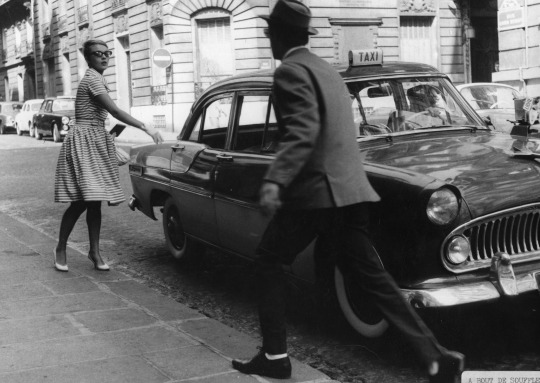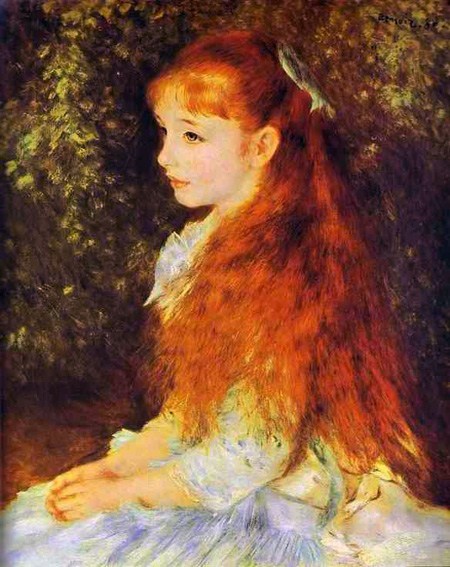#and before you ask; yes those are the haiku icon themes
Explore tagged Tumblr posts
Text

new desktop new me
#linux#i use arch btw#arch linux#linuxposting#unixporn#and before you ask; yes those are the haiku icon themes
112 notes
·
View notes
Photo

Welcome to Back to Middle-earth Month 2020!
Our theme this year is "Endings and Beginnings." We are offering both a prompt generator for those who wish to start creating now (though please wait to post until March begins!) as well as daily prompts posted in March for those who like that particular format.
Though we chose the theme in December, it is certainly fitting due to Christopher Tolkien's recent passing. But it is with heavy hearts that we inform you of the reason for this year's theme: this is b2mem's final year. It will have had a good, enthusiastic, nine year run. Sadly, all things must come to an end.
BUT! Back to Middle-earth Month itself will not come to an end. B2MeM started off as a multi-group activity, with each group doing its own thing. (You can read the history of B2MeM on Fanlore.) We don't have a monopoly on the concept--it wasn't ours to begin with! If people want to keep on with B2MeM in the future, we welcome and encourage it.
As for what we are doing this year:
You can find the prompt generator here. There are nine fields: beginning (general words), canonical beginnings (for things that happened in canon), first line, ending, canonical endings, last line, LotR location, Silm location, and character groups. You can use one, some, or all fields and you may re-roll as many times as you like until you get prompt(s) that inspire you.
The daily prompts will be posted, as usual, around UTC midnight starting March 1.
A reminder: we post our prompts in the Dreamwidth community and on our LiveJournal, this Tumblr, and our email newsletter. We also have an AO3 collection.
Frequently Asked Questions
Who can participate?
Anyone! It doesn’t matter if this is your first time in the Tolkien fandom or your fiftieth year; everyone is welcome. All genres, formats, and ratings of fanworks are also welcome.
How can I participate in B2MeM if I'm also creating something for a fandom event also running in March?
You can use B2MeM prompts in your fanwork(s) for the other event(s).
How can I participate if I don’t have a Dreamwidth account?
If you wish to leave comments on fanworks posted on Dreamwidth, you may use an anonymous comment. However, we do require anon comments to be signed. (For example, if your AO3 username is Frodofan1, please sign your comment Frodofan1.) Anonymous comments are automatically screened before they appear in the community, and unsigned comments will not be unscreened.
We welcome participation on other platforms if you do not wish to post fanworks on Dreamwidth, even platforms we don't have a mirror on. We welcome links pointing to your fanworks posted elsewhere. We also have an AO3 collection and the SWG has a challenge listing for B2MeM 2020.
If you do wish to post fanworks on Dreamwidth or link there to fanworks posted elsewhere, you will need a Dreamwidth account. You can sign up for a free account here. There is also OpenID available that allows log-in through Google, Facebook, Twitter, and LiveJournal.
A link list of Tumblr to Dreamwidth guides can be found here.
What sort of things do you consider to be fanworks?
It’s simple: if you consider it fanwork, so do we. We’ve had stories, artwork, cosplay, crafts, rec lists, fanmixes, and more. We welcome everything.
We only require that responses have a significant basis in Tolkien’s works. Crossovers and AUs are welcome, as are movieverse fanworks.
Is there a minimum amount of words, time spent, etc. in order to participate?
No! We want people to be as free to create as possible, whether this means writing a lone haiku or working on an epic novel, creating a single icon or a batch of a hundred, a sketch or a detailed painting, a moodboard or picspam, or whatever else you wish to work on.
What are your restrictions on content? Do you require warnings?
We welcome all Tolkien-based fanworks. There are no restrictions on content; the B2MeM community accepts all forms of fanworks from low-rated gen fluff to explicit incest. We do have a header that participants are required to use on Dreamwidth in order to allow people the ability to choose whether or not to view your fanwork. The header and tagging information post will be available shortly.
We require warnings for reasonable things that fellow fans might wish to avoid, such as violence, gore, explicit sex, incest, etc. OR you may use Choose Not to Warn. Choose Not to Warn indicates that the work may contain anything, including potentially triggering or explicit content. Participants who wish to avoid certain content should make their own decisions on whether to read or view CNTW entries.
Do I need to create something using all of the prompts?
No! You may choose to use one prompt or you can use as many as you wish. If you only want to create one fanwork for the month, you may use only one prompt or you can use as many in your fanwork as work for you.
Can I combine prompts into a single work?
Yes! How you do this is up to you.
Do I have to take the prompts literally?
No! We welcome any interpretation of the prompts; we encourage outside-of-the-box thinking. How you respond to the prompts is up to you.
Can I use works begun in previous years or other works in progress?
Yes! You are welcome to continue WIPs of all sorts with one or more B2MeM prompts. They do not have to be previous B2MeM works.
I signed up for a previous B2MeM event and didn’t finish. Can I still participate?
Yes! We do not penalize people.
Do I have to wait until after March to post my fanwork outside of B2MeM spaces?
No. We encourage crossposting to whatever sites you normally use.
What if I have a question that isn’t covered by the above?
Please email us at [email protected]. You can use the Ask function here, but we will be much slower in answering. (And that’s if Tumblr doesn’t eat our Asks, which has been a problem.)
86 notes
·
View notes
Text
Ten Thoughts Inspired By: A Bout de Souffle

1. Before I ever saw the film I saw this poster. As soon as I laid eyes on it I knew I had to see the film. It radiated cool energy. And that title. At once a declaration of the film’s style and the viewer’s response to it. A promise and a boast. Stylish. Sexy. Breathless. But its original title, A Bout de Souffle, translates as Out Of Breath. That’s a B-movie title, slang for death, like Chandler’s The Big Sleep. Consider if they’d used that as the English title instead. Would the film have attained such a cool reputation? Just imagine it on the poster. Stylish. Sexy. Out Of Breath. Suddenly it’s not so much an intimation of awed wonder as middle-aged decline. My younger self probably wouldn’t have been so impressed, but so what? Does it matter? A title’s just a title, after all, a way of identifying one film from another. Sure, mostly, but it’s not always that simple. Consider these titles for example: Stranger Than Paradise. Some Like It Hot. White Heat. Touch of Evil. Now each of these could, at a push, describe what happens in their respective films, but I don’t think that’s what’s going on when we read them. They’re not merely labels, they’re suggestive, free-floating, haikus of compressed mood. Yes, a good title can define a film, capture its essence, but it can also add to it, deepen it, complicate it. It’s a chemical reaction. Just think of the mysterious, symbiotic relationship we have with names and they have with us. Do they shape us, do we grow into them? If you don’t believe this then consider these possible alternative titles for the films above; Losers. TransAmerica. Mother Love. The Mexican. Does it make a difference? It’s hard to say, but this much is clear, the anonymous translator tasked with finding an English version for A Bout de Souffle clearly thought so.

2. The film of tomorrow will not be directed by civil servants of the camera, but by artists for whom shooting a film constitutes a wonderful and thrilling adventure. – Francois Truffaut
The famous dedication is to Monogram Pictures. Monogram were a poverty row studio specialising in cheap genre flicks, serials and westerns. So what was the attraction for serious French cinephiles like Truffaut and Godard? Well, for starters, because they were largely ignored they were an undiscovered continent, ripe for reappraisal. They often relied on genre conventions, offering rich ground for theorising, for detecting encoded meanings, hidden ideas, themes build up across a body of work. Also because they had less to lose they could show the seemier side of existence more freely than bigger studio productions, the kind of exploitation subjects considered beneath proper art. Some French critics saw passed all that bourgeois respectability, understood that the life of a petty thief could be as worthy of great art as the noblest king, that an absence of craft or style might represent a film’s psychological meaning, its hard indifference to the lies of romance. They understood serious artists could exist outside the mainstream, might find the fertile confines of genre more to their liking, might prefer playful indifference to highbrow pretension. But even the worst of these films taught them about innocent enjoyment, the pleasure of transformation, how much easier it was to bring the moves, clothes and dialogue into your life when they were ritualised, repeated, how cliches spoke to the yearnings inside ordinary people. By dedicating his film to Monogram Godard was sticking two fingers up at the industry, rejecting its middlebrow concerns with craft and rules, aligning himself with the outsiders, the dreamers, with those great American values of outrage, adventure and play. This is a game, he’s telling us. We’re playing here. So can you.

3. The famous opening line is: I’m an asshole, a provocation from the start, followed by a close up of a scantily clad girl on the front of a newspaper, lowered to reveal our hero, Michel, hat over his eyes, puffing on an enormous cigarette. He’s cool, but posing too, a kid playing dress-up. Then he runs the side of his thumb across his lips. It’s a signal. To us. Thumb across lips. That’s all it takes. Your Bogie. Your life is a movie. It’s hard to appreciate now the impact of this message. A Bout de Souffle was one of the first films to acknowledge people’s desire for movie grace in their lives, wanting their everyday existence transfigured by it, blessed with purpose and shape, ordinary personas imbued with unified glamour. You don’t need to be famous, a star. The magic isn’t out there somewhere, owned by producers, studios, agents, fans. It’s in you now, once you’ve seen the film, it’s yours, a gift, not a privilege. This is what cinema is, the democratisation of play. It’s an evolutionary tool, teaching poor regional kids moves and gestures to help them escape impoverished lives, to face the twin terrors of adolescence and neighbourhood streets. After all, when you live in a non-verbal environment knowing how to stand on corners with cool indifference is a vital art. This is another thing the film is already telling us. The street is a movie set too.

4. We first see Patricia ambling down the Champ-Elysees in her flat shoes, sweetly calling ‘New York Herald Tribune!‘ She’s played by Jean Seberg, proof that nationality is a notional concept at best. She’s supposed to be the American chick but comes across, in her clothes, her manner, her cropped hair, as ineffably French. It’s hard to imagine any other contemporary American actress playing the part, actually American but spiritually in tune with the Frenchness of the whole enterprise. (The film too is at once American in its conventions and French in its style and ideas.) It was that way from the start. Her screen debut was as Saint Joan (1957), hand-picked from 18,000 hopefuls by Otto Preminger. It was Preminger again who brought her to France the following year to play the spoiled Celine in Bonjour Tristesse. The same year she married film director Francois Moreuil. By the time of A Bout de Souffle they were divorced and she’d taken up with French author Romain Gary, marrying him in 1962. Was it fate or inclination that drew her to the French and them to her? Or was it the hair? The gamine prettiness? Whatever it was, it went on, until her tragic, mysterious death in 1979, found dead in her car on the same Parisienne streets she’d watched Belmondo play dead on all those years before, back when they were all young enough to think of death as a romantic game, something to be bargained with.

5. Leaving Patricia behind Michel passes a poster for a film called Ten Seconds To Hell (1959), its tagline proclaiming ‘Live dangerously till the end!’ It’s a lovely moment, not just for the renegade cheek of using the poster without permission, but for the serendipity of it being there in the first place, articulating the film’s key theme – defying death. (You know you’re in the zone when the world starts to speak to you like this, send you secret messages, when you see connections everywhere, when you start to believe there’s no such thing as a coincidence, that luck, in fact, is just fate in disguise).

6. Once you accept the rule of death thou shalt not kill is an easily and naturally obeyed commandment. But when a man is still in rebellion against death he has pleasure in taking to himself one of the Godlike attributes, that of giving it. This is one of the most profound feelings in those men who enjoy killing. – Ernest Hemingway, ‘Death in the Afternoon’
‘It is solely by risking life that freedom is obtained,’ Hegel wrote, somehow defining the essence of A Bout de Souffle over a century before it was made. The spirit of the film may be its exhilarating sense of freedom, it’s jazzy liberation from social, artistic and cinematic conventions, but it’s also obsessed with death, from its title to its conclusion. Or rather, with invoking it in order to feel more alive. If the taking of life could, as Hemingway suggests, ward off your own death, than so could acting it out. In this sense, the film is as ritualistic as a bullfight, a bloodless rebellion against death. Just as ancient Greek rites evolved into formalised drama, the death of a tragic hero offered to the gods rather than the sacrifice of a goat, so too with cinema. It may be a game, Godard suggests, but it isn’t frivolous. It’s as serious as any religion, as vital to our happiness as freedom itself. It was a message that hit the new decade like a Molotov cocktail, starting a creative blaze that lasted twenty years and engulfed the old Hollywood studio system in its wake.

7. ‘What is your greatest ambition?’ Patricia asks the novelist (played by director Jean-Pierre Melville) at the kind of pretentious press conference only the French would have. ‘To become immortal‘, he replies, looking straight into the camera, ‘and then to die‘. It’s a joke, a contradiction. He might as well have said his ambition was ‘to wake and then to dream’. It’s an impossibility, mutually exclusive states, waking/dreaming, immortality/death. Except, of course, there is one place where the impossible can happen. When we watch a film, especially in the dark of a cinema, what else are we doing but dreaming while still awake? And when we watch the great stars of the silver screen like James Cagney, Bette Davis or Steve McQueen, what else are we doing but watching the dead walk again, forever alive in their films, made immortal by them?

8. Which is what Bogart represents in the film, not just a role model but an icon of immortality. Dead only three years when A Bout de Souffle was made, already he’s becoming a cult, his moves, clothes and dialogue remembered, repeated and fetishised. But why Bogie? What was it about him that so obsessed the French? Maybe he was, in some way, more French than other Hollywood stars, more ironic, fatalistic, ugly? Maybe the characters he played, men with secrets, with shadowy pasts, were more in keeping with a nation haunted by defeat, collaboration and existential dread? Whatever it was it went deep, just think of the hats and coats in Melville’s own films like Le Samourai.

Of course, the Bogart of The Maltese Falcon, Casablanca and The Big Sleep was also the coolest man on the planet, a dream of tough grace under pressure. He crystallised the essence of cool long before Brando and Dean turned up, a man’s cool, not a grumpy adolescent’s, someone who’s lived, seen things, been betrayed by events, by his own heart, hides his honour like a dirty secret. But we know it’s there, we know he does care, does know which side is right, he just won’t be played for a sap any more. Being a man, he seems to say, is a moral act. If you don’t know how to read people, if you don’t know when to keep quiet, if you don’t understand that sometimes cynicism is just the truth no one wants to hear, then you deserve what you get, you leave yourself wide open, cannon fodder for con men, Nazis and certain kinds of women.

9. Then there’s the lovely extended scene in Patricia’s apartment. She arrives home to find Michel in her bed. What follows is spontaneity, calculation and natural light, cultural allusions everywhere. She poses before a poster of Renoir’s Mlle Irene Cahen d’Anvers and asks who’s the prettier. He caresses her bum and asks can he piss in her sink. She washes her feet and tell him she’s pregnant. He sits beneath a Picasso figure wearing a mask. She quotes from The Wild Palms by William Faulkner: ‘Between grief and nothing, I will take grief.’ Michel says he’d choose nothing. ‘Grief‘, he adds, ‘is a compromise‘. They talk, flirt, test each other and eventually make love, fumbling under the covers like kids, not sure what their parents really do under there. The claim that capturing Seberg’s beauty on film matches Renoir’s achievement on canvass is hardly worth noting now. But it’s a reminder of a time before the triumph of popular culture when film was considered an upstart medium, devoid of true craft, a nickelodeon distraction for immigrant hordes and over-excited housewives, not something to be taken seriously as high art. This was the fight Godard, Truffaut and the rest of the Cahiers du Cinéma critics were waging in the late 50s, rescuing great artists like Hitchcock and Hawks from the neglect this pompous snobbery had consigned them to.

And what about Michel’s claim that grief is a compromise? Is it an existential statement, like Beckett’s ‘every word is like an unnecessary stain on silence and nothingness‘, or is he just trying to sound cool. Is he suggesting that emotions are a refuge, a refusal to accept the truth? It’s an interesting idea in an age when personal grief has become everyday currency. Would Bogie give in to grief, cry and wail, take to his bed, sell his story to the tabloids? No, he wouldn’t. He’d take it inside him, order a drink, light a cigarette, another lesson learned, another test passed. The cigarette is vital of course. Just consider how important they were in all this. Michel smokes non-stop throughout the film. Even his dying breath is a puff of smoke. Can you imagine a time when smoking was this cool? When things weren’t ghosted by consequences, by health warnings, when people drank at work and smoked in cinemas, weren’t constantly fretting about their health, short-changing their youth for a few extra years at the end? When looking cool now was more important than being alive then? It’s all about how you look, y’see, masks, uniforms, encoded signs, the transformative power of objects and faces. ‘The mystery of the world is in the visible, not the invisible,’ as Oscar Wilde rightly pointed out. Open your eyes (and dream). We’re being movie stars here. They’re immortal. They never die of cancer or liver failure.

10. ‘The film of tomorrow will be an act of love...’ – Truffaut
Above all it’s a film about love, love of cinema, love of life through cinema. There really was no difference to these young men. Cinema was life. Watching a beautiful woman and capturing her on film was the same thing to them. It was very chauvinistic, of course, but very romantic too (essentially the same thing). Romance has no time for feminist aspirations. It wants to be taken out of this crappy world, wants to idealise, heighten, improve. It’s foolish, a youthful folly, but where would we be without it? For a few brief years, as the world woke up from it’s post-war slumber, a handful of young men believed that cinema was the new language of happiness and truth. A Bout de Souffle bottled that moment. It’s a time machine. The spirit and energy of that moment can be revisited every time you watch it. You could even say it’s immortal. Or to put it another way: Devil in the Flesh. Rififi. And God Created Woman. Scarface. A Bout de Souffle. The best film around.
138 notes
·
View notes
Text
B2MeM 2019: How to Play and FAQs
How to Play Bingo
Bingo is a fairly simple game. B2MeM puts our own spin on it by allowing participants to create cards before we begin playing and by not having a single winner.
1. Card creation: submit prompts for one themed card, or if you have graphics skills, create multiple themed cards
2. Card claiming: claiming what cards you want to play with, giving you prompts for creating fanworks
3. Gameplay:
A mod will post a number every day. For example, B3.
You look for that number on your card(s) to see if you have any matches. For example, B3 will be in the first "B" column.
If you have a match, you can create something using that prompt. We cannot guarantee every person will have a prompt to create for every day.
If you have multiple matches, you may use as many prompts as inspire you. For example, B3 has the following prompts on some cards: Silmaril, Finwe/Indis, AU, Tragedy, fog. You can create a fanwork involving one, some, or all of those prompts, or you can create multiple fanworks using these prompts in any combination.
You do not have to use every prompt that is called on your cards.
A traditional bingo game is won when someone had five numbers in a row, column, or diagonal and the board is then cleared for the next round. B2MeM is not playing traditional bingo; people who reach a bingo will receive a banner and the boards are not cleared. It does not matter if you have a bingo on March 5, March 31, or not at all: the point of the game is to use prompts to create fanworks.
You can read an in-universe explanation of how bingo came about and how to play here.
Frequently Asked Questions
Who can participate?
Anyone! It doesn’t matter if this is your first time in the Tolkien fandom or your fiftieth year; everyone is welcome. All genres, formats, and ratings of fanwork are also welcome.
How can I participate in B2MeM if I'm also creating something for a fandom event also running in March?
You can use B2MeM prompts in your fanwork(s) for the other event(s).
What sites can I follow you on?
Dreamwidth is our main platform, but we have mod-only mirrors on Tumblr and LiveJournal. New for this year, we also have a mailing list so you can receive our prompts in your email. We have an AO3 collection as well.
How can I participate if I don’t have a Dreamwidth account?
If you wish to leave comments on fanworks posted on Dreamwidth, you may use an anonymous comment. However, we do require anon comments to be signed. (For example, if your AO3 username is Frodofan1, please sign your comment Frodofan1.) Anonymous comments are automatically screened before they appear in the community, and unsigned comments will not be unscreened.
We welcome participation on other platforms if you do not wish to post fanworks here, even platforms we don't have a mirror on. We welcome links pointing to your fanworks posted elsewhere. We also have an AO3 collection and the SWG has a challenge listing for B2MeM 2019.
If you do wish to post fanworks on Dreamwidth or link to fanworks posted elsewhere, you will need a Dreamwidth account. You can sign up for a free account here. There is also OpenID available that allows log-in through Google, Facebook, Twitter, and LiveJournal.
A link list of Tumblr to Dreamwidth guides can be found here.
What sort of things do you consider to be fanworks?
It’s simple: if you consider it fanwork, so do we. We’ve had stories, artwork, cosplay, crafts, rec lists, fanmixes, and more. We welcome everything.
We only require that responses have a significant basis in Tolkien’s works. Crossovers and AUs are welcome, as are movieverse fanworks.
Is there a minimum amount of words, time spent, etc. in order to participate?
No! We want people to be as free to create as possible, whether this means writing a lone haiku or working on an epic novel, creating a single icon or a batch of a hundred, a sketch or a detailed painting, a moodboard or picspam, or whatever else you wish to work on.
What are your restrictions on content? Do you require warnings?
We welcome all Tolkien-based fanworks. There are no restrictions on content; the B2MeM community accepts all forms of fanworks from low-rated gen fluff to explicit incest. We do have a header that participants are required to use in order to allow people the ability to choose whether or not to view your fanwork. The header and tagging post will be available before March.
We require warnings for reasonable things that fellow fans might wish to avoid, such as violence, gore, explicit sex, incest, etc. OR you may use Choose Not to Warn. Choose Not to Warn indicates that the work may contain anything, including potentially triggering or explicit content. Participants who wish to avoid certain content should make their own decisions on whether to read or view CNTW entries.
Do I need to create something using all of the prompts that are called on my card(s)?
No! You may choose to use one prompt or you can use as many as you wish. If you only want to create one fanwork for the month, you may use only one prompt or you can use as many in your fanwork as work for you.
Can I combine fanworks prompts into a single work?
Yes! How you do this is up to you.
Do I have to take the prompts literally?
No! We welcome any interpretation of the prompts; we encourage outside-of-the-box thinking. How you respond to the prompts is up to you.
Can I use works begun in previous years or other Works in Progress?
Yes! WIPs of all sorts are welcome to be continued with one or more B2MeM prompts. They do not have to be previous B2MeM works.
I signed up for a previous B2MeM event and didn’t finish. Can I still participate?
Yes! We do not penalize people.
Do I have to wait until after March to post my fanwork outside of B2MeM spaces?
No. We encourage crossposting to whatever sites you normally use.
What if I have a question that isn’t covered by the above?
Please Ask or email us at [email protected].
4 notes
·
View notes